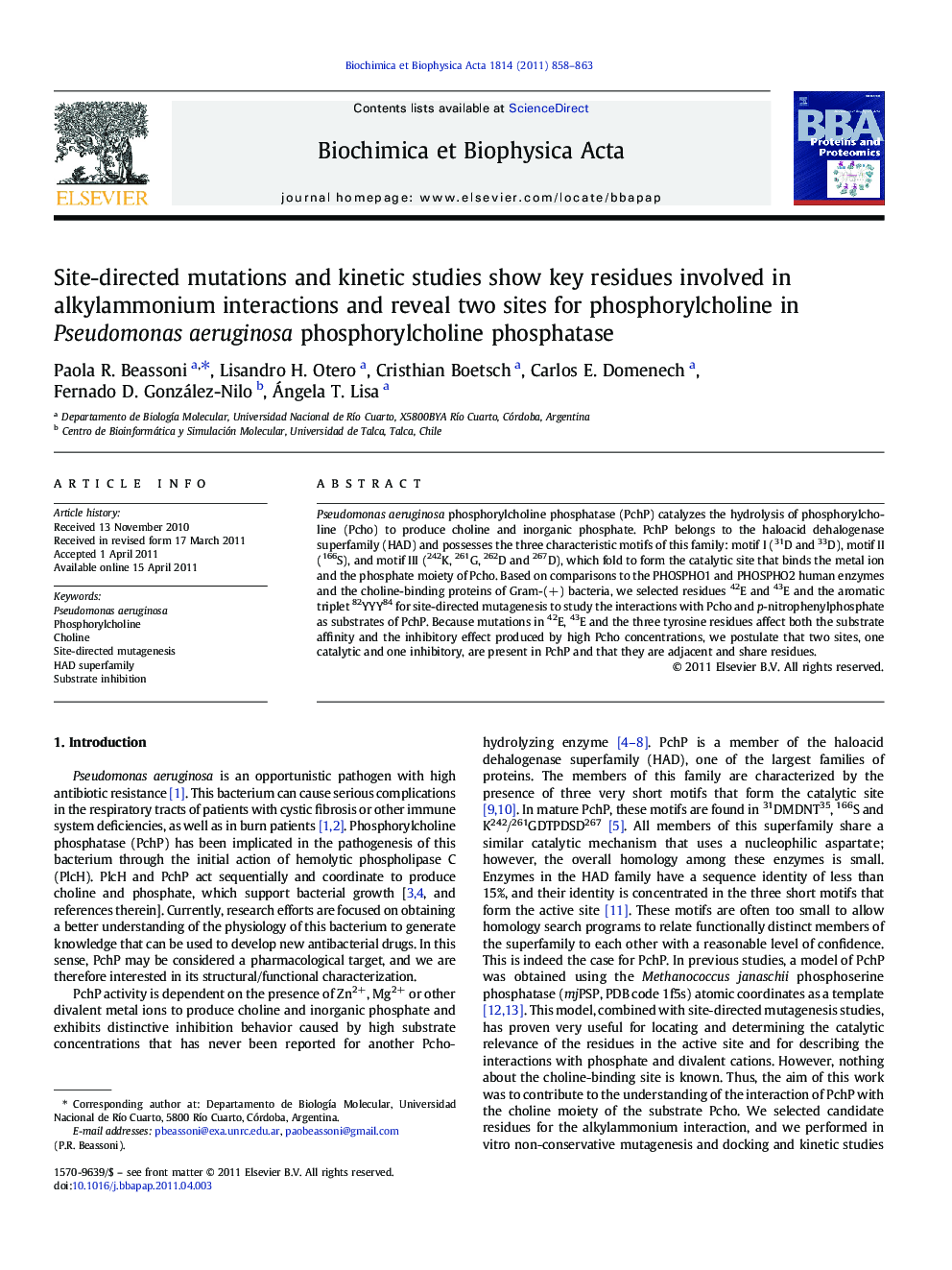| Article ID | Journal | Published Year | Pages | File Type |
|---|---|---|---|---|
| 1177868 | Biochimica et Biophysica Acta (BBA) - Proteins and Proteomics | 2011 | 6 Pages |
Pseudomonas aeruginosa phosphorylcholine phosphatase (PchP) catalyzes the hydrolysis of phosphorylcholine (Pcho) to produce choline and inorganic phosphate. PchP belongs to the haloacid dehalogenase superfamily (HAD) and possesses the three characteristic motifs of this family: motif I (31D and 33D), motif II (166S), and motif III (242K, 261G, 262D and 267D), which fold to form the catalytic site that binds the metal ion and the phosphate moiety of Pcho. Based on comparisons to the PHOSPHO1 and PHOSPHO2 human enzymes and the choline-binding proteins of Gram-(+) bacteria, we selected residues 42E and 43E and the aromatic triplet 82YYY84 for site-directed mutagenesis to study the interactions with Pcho and p-nitrophenylphosphate as substrates of PchP. Because mutations in 42E, 43E and the three tyrosine residues affect both the substrate affinity and the inhibitory effect produced by high Pcho concentrations, we postulate that two sites, one catalytic and one inhibitory, are present in PchP and that they are adjacent and share residues.
► With in silico studies we selected candidate residues for alkylammonium interaction. ► We present kinetic data with p-NPP and Pcho for the wtPchP and mutants. ► We propose the presence of two binding sites for Pcho. ► We present a model with both substrates docked in the active site. ► We propose some residues of PchP in the interaction with the choline moiety of Pcho.
